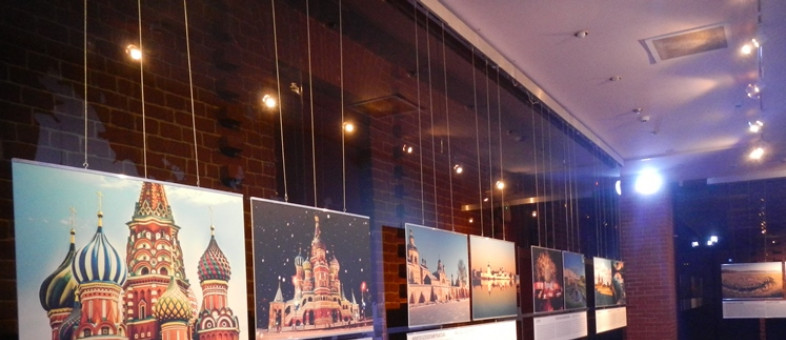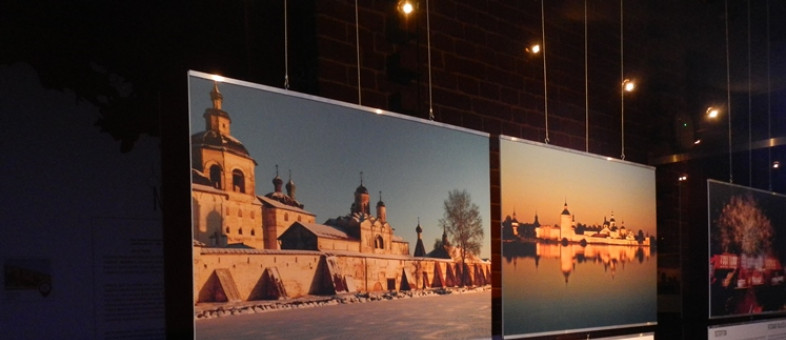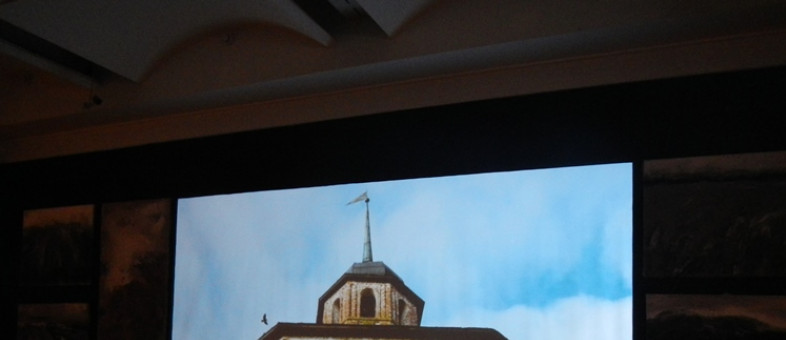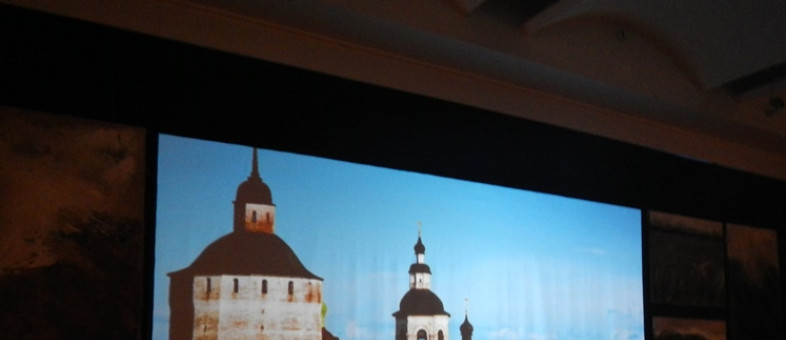Kirillo-Belozersky Monastery among “Miracles of Russia”!
Visitors of the multimedia exhibition “Miracles of Russia” could read about the ensemble of the Kirillo-Belozersky Monastery in three languages. Information about the natural and architectural sites in the State Historical Museum is given in Russian, English and Chinese!
Visitors of the exhibition “Miracles of Russia” could make a tour of the most interesting places of our country without leaving the State Historical Museum. The multimedia display was opened right in the heart of Moscow on July 10. It presents one hundred natural and architectural sites that have been included into the final list made according to the results of the national vote organized by the television channel “Russia”, Radio Mayak and the Izvestia newspaper.
You can see the most beautiful places of our country. The ensemble of the Kirillo-Belozersky Monastery is presented among the internationally known sites, such as Lake Baikal, Peterhof, the Valley of Geysers on Kamchatka Peninsula and the Manpupuner rock formations or Poles of the Komi Republic.
“This exhibition is staged in such a way that the Kirillo-Belozersky Monastery is placed second in it. It is being displayed between the St. Basil’s Cathedral and Peterhof that were included into “Seven Wonders of Russia” in 2008. The video made by the Kirillo-Belozersky Museum-Reserve is presented along with the most incredible “Miracles of Russia” at the multimedia exhibition! Our country is so huge that you can easily make the ranking of ten and hundred thousand miracles of the world. So it is a great honour for us to get to the hundred!” said A.V. Arkhippov, head of the Development Department in the Kirillo-Belozersky Museum-Reserve.
The exhibition “Miracles of Russia” is timed to the Year of Ecology. The organizers’ goals were not only to show the remarkable natural recourses of the country, but also to attract visitors’ attention to the problem of preservation and protection of these sites.
Wonderful photographs, rare archival materials, revived depictions on the large screens and a meticulously elaborated route that created special atmosphere of presence and impression of the real tour helped to make it especially spectacular and expressive.
Official name of the museum:
The Federal State Budgetary Institution of Culture “Kirillo-Belozersky Historical, Architectural and Art Museum-Reserve”
Founded:
In 1924
Museum status:
It was included into the State List of Particularly Valuable Objects of Cultural Heritage of the Peoples of the Russian Federation in 1997.

 найти на плане
найти на плане



